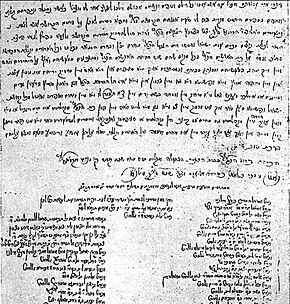
Back ميسناجديم ARZ Mitnagdí AST Misnagdim Catalan Mitnagdim Czech Mitnagdim German Mitnagdí Spanish Mitnagdim French ההתנגדות לחסידות HE Mitnagdim Italian ミスナグディーム Japanese

Misnagdim (מתנגדים, "Opponents"; Sephardi pronunciation: Mitnagdim; singular misnaged / mitnaged) was a religious movement among the Jews of Eastern Europe which resisted the rise of Hasidism in the 18th and 19th centuries.[1][2][3] The Misnagdim were particularly concentrated in Lithuania, where Vilnius served as the bastion of the movement, but anti-Hasidic activity was undertaken by the establishment in many locales. The most severe clashes between the factions took place in the latter third of the 18th century; the failure to contain Hasidism led the Misnagdim to develop distinct religious philosophies and communal institutions, which were not merely a perpetuation of the old status quo but often innovative. The most notable results of these efforts, pioneered by Chaim of Volozhin and continued by his disciples, were the modern, independent yeshiva and the Musar movement. Since the late 19th century, tensions with the Hasidim largely subsided, and the heirs of Misnagdim adopted the epithet Litvishe or Litvaks.
- ^ Garfinkle, Adam (1999-12-07). Politics and Society in Modern Israel: Myths and Realities. M.E. Sharpe. ISBN 978-0-7656-3084-1.
- ^ Grynberg, Michal (2003-11-01). Words to Outlive Us: Eyewitness Accounts from the Warsaw Ghetto. Henry Holt and Company. ISBN 978-1-4668-0434-0.
- ^ Sears, Dovid (1997). The Path of the Baal Shem Tov: Early Chasidic Teachings and Customs. Rowman & Littlefield. ISBN 978-1-56821-972-1.